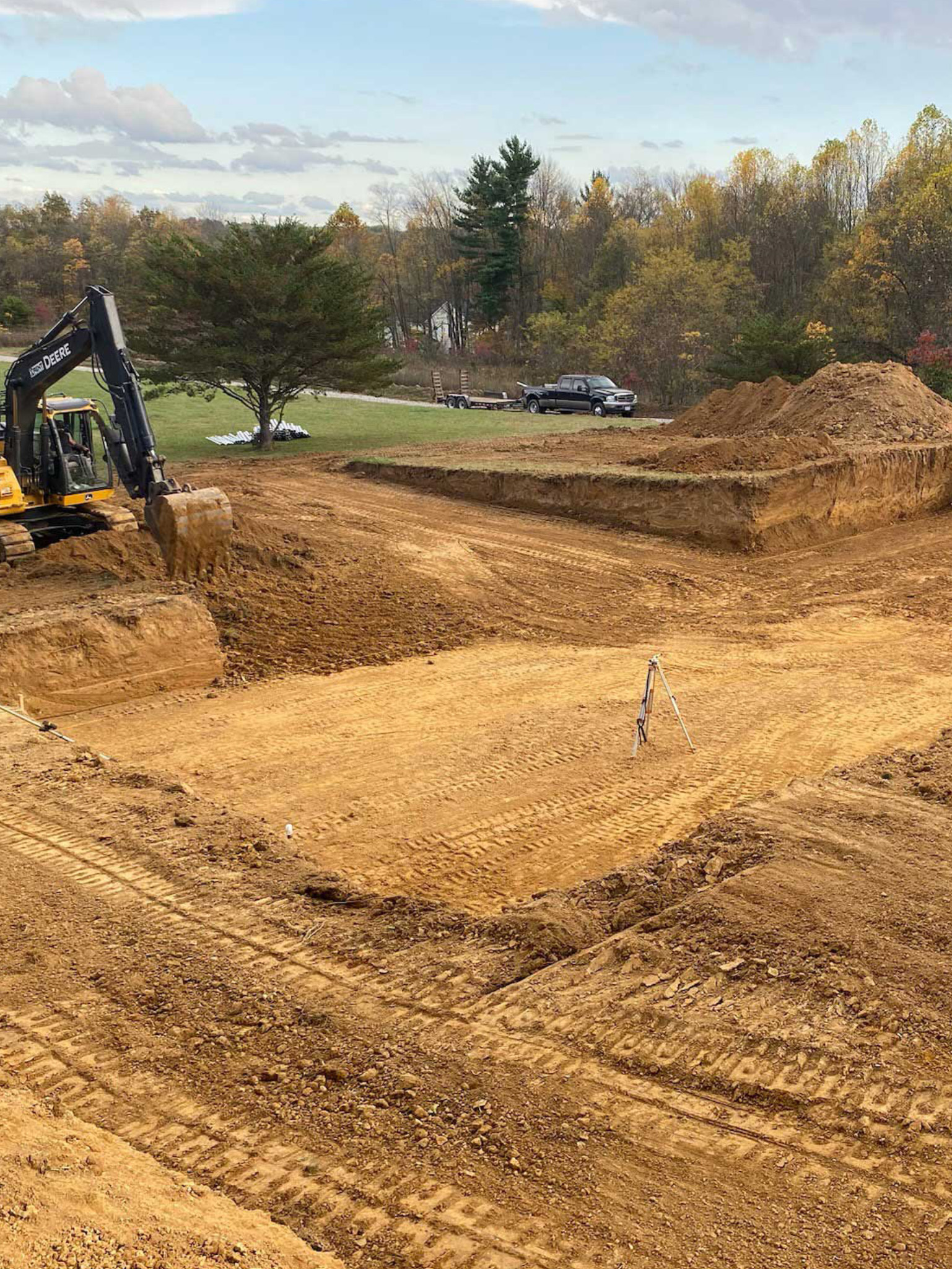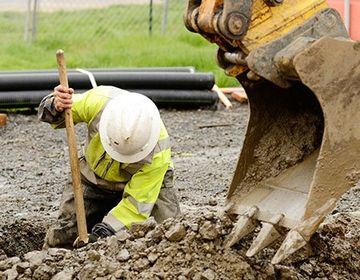Residential Excavating Ohio - Specialized Excavation for Ohio Homes
Residential Excavating Ohio - Specialized Excavation for Ohio Homes
Blog Article
Extensive Expedition: The Scientific Research Behind Superior Excavation Practices
The realm of excavation methods is a domain name where scientific research links with craftsmanship to unearth the secrets concealed under the earth's surface. From ancient hand tools to contemporary hydraulic excavators, the evolution of excavation techniques has been a testimony to human ingenuity and technical advancements. Nonetheless, what truly sets remarkable excavation techniques apart is a deep understanding of geological concepts, paired with the application of cutting-edge tools and approaches. By checking out the science behind these practices, we can uncover the secrets that exist under our feet and value the accuracy and expertise that go right into every dig.
Advancement of Excavation Strategies
Throughout history, the evolution of excavation strategies has played a vital function in advancing building and construction methods and archaeological explorations. From the fundamental tools used by our forefathers to the advanced equipment used in contemporary times, the development of excavation techniques has actually significantly transformed just how we approach various jobs.
In old times, manual labor with standard tools such as shovels, pickaxes, and wheelbarrows was the key method of excavation. This labor-intensive procedure limited the deepness and scope of excavations, commonly resulting in slow-moving progress and limited accessibility to certain websites. However, as people advanced, so did the methods and devices made use of for excavation.
The Industrial Change marked a transforming factor in excavation experiment the intro of steam-powered equipment. This innovation changed the area, permitting faster and much more substantial excavations. In modern times, technology plays an essential duty in excavation, with advancements like GPS systems, drones, and 3D scanning improving accuracy and performance in the area. The evolution of excavation techniques remains to shape the method we construct, discover, and understand the world around us.
Function of Innovation in Excavation

The integration of cutting-edge innovation has actually basically transformed the area of excavation, improving accuracy and performance to extraordinary degrees - lancaster trenching. One of the essential technical developments that has actually significantly affected excavation techniques is the usage of General practitioner systems.
Furthermore, the development of 3D modeling and simulation software has streamlined the preparation procedure for excavation projects. Engineers and drivers can now picture the whole excavation process before damaging ground, identifying potential difficulties and maximizing operations. Along with this, the execution of drones in excavation activities has actually promoted aerial surveys, volumetric measurements, and site assessments with unparalleled rate and accuracy.
Geological Principles in Excavation
An understanding of geological principles is necessary for making certain the architectural honesty and stability of excavation sites. Geological factors play a vital function in establishing the usefulness and safety and security of excavation projects (excavating ohio). One crucial geological principle to think about is the sort of soil or rock present at the site. Different dirt kinds, such as gravel, clay, or sand, have varying levels of security and call for various excavation strategies. As an example, cohesive soils like clay may require additional assistance to protect against collapses, while sandy dirts may be susceptible to erosion during excavation.
By carrying out comprehensive geological studies and evaluation, excavators and designers can create techniques to minimize risks and guarantee the successful conclusion of excavation projects. Eventually, including geological concepts into excavation methods is crucial for accomplishing risk-free, reliable, and sustainable results.

Most Recent Devices for Excavation
In the world of excavation techniques, modern technologies in tools have actually revolutionized the efficiency and accuracy of excavation procedures. Among the most up to date devices making waves in the sector is making use of drones outfitted with innovative imaging modern technology. These drones can give thorough airborne surveys of excavation sites, offering real-time data on topography and potential hazards. This information help in far better preparation and decision-making during the excavation process.
An additional cutting-edge device getting popularity is the implementation of 3D printing modern technology for creating personalized excavation equipment. This permits the manufacturing of specialized tools that are customized to the certain requirements of a task, boosting effectiveness and reducing downtime.
Furthermore, innovations in materials scientific research this article have caused the advancement of stronger and a lot more sturdy excavation tools. lancaster excavation. Tungsten carbide-tipped excavator accessories, as an example, deal superior performance in tough ground conditions, boosting productivity on-site
Scientific research's Effect on Excavation Practices

Additionally, scientific study on dirt auto mechanics and geotechnical engineering has actually given important understandings right into soil behavior, permitting excavation specialists to make enlightened choices concerning excavation approaches and soil stabilization methods. Overall, science continues to drive technology and improvement in excavation practices, making excavation tasks extra efficient, affordable, and lasting.

Final Thought
To conclude, the development of excavation techniques has been significantly influenced by innovations in modern technology and a much deeper understanding of geological principles. The current tools and tools made use of in excavation have improved efficiency and accuracy in the field. The application of scientific expertise has considerably enhanced browse around this site excavation techniques, resulting in a lot more lasting and efficient methods for digging deep into different kinds of products.
In the realm of excavation methods, contemporary developments in tools have revolutionized the efficiency and precision of excavation procedures. By leveraging clinical principles, the excavation industry has been able to significantly improve performance, precision, and security in excavation processes. GPR allows excavation groups to non-invasively check and map subsurface structures, utilities, and potential threats, allowing them to prepare excavation projects with better accuracy and decreased risk of accidents.
In addition, clinical research on dirt technicians and geotechnical engineering has provided beneficial understandings into dirt actions, enabling excavation professionals to make enlightened decisions concerning go to this web-site excavation methods and dirt stabilization strategies. Generally, science proceeds to drive advancement and improvement in excavation techniques, making excavation jobs much more efficient, cost-effective, and sustainable.
Report this page